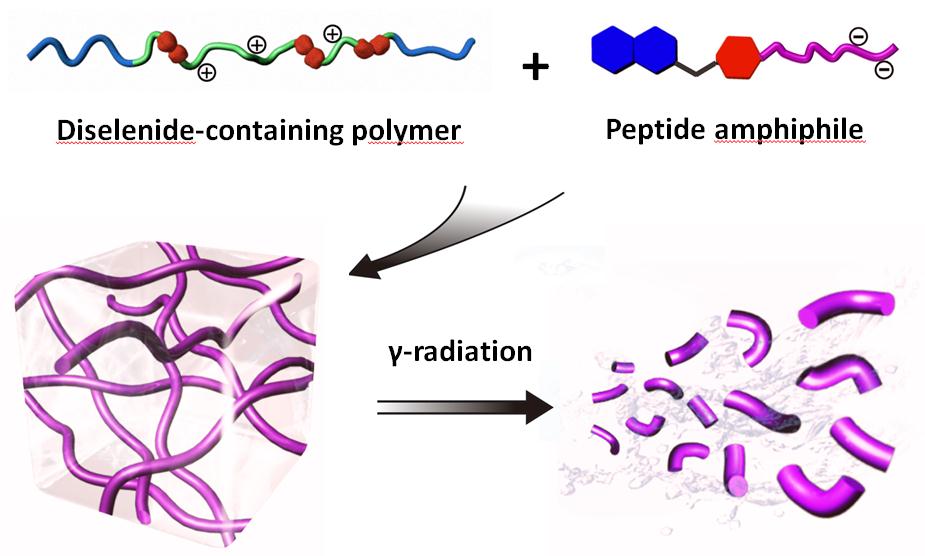Under the financial support of the National Basic Research Program of China (NSFC) and National Natural Science Foundation of China (973), Dr. Huaping Xu (Tsinghua University) et al. has made important progresses on stimuli-responsive selenium-containing polymer assemblies in collaboration with Dr. Zhimou Yang (Nankai University).
Chemotherapy and radiotherapy refer to the treatment of disease (especially cancer) by using chemical drugs and radiation, respectively. However, chemotherapeutic drugs are normally toxic and may cause side-effects by the nonspecific uptake of healthy cells. Radiotherapy can cause radiodermatitis, diarrhea and other sufferings to the patients. Current researches on cancer treatments are still far away from targeted drug delivery. Developing novel drug-delivery systems for the combination of radiotherapy and chemotherapy are still highly urgent. Huaping Xu and his coworkers have prepared a γ-ray responsive supramolecular hydrogel through the complex of a positively-charged diselenide-containing polymer and a peptide amphiphile. The supramolecular hydrogel exhibited a gel–sol transition under exposure to relatively low dose of γ-radiation owing to the oxidative cleavage of diselenide bonds in the polymer main chain. This system can be used to realize controlled drug release under γ-ray irradiation. This line of work may open a new avenue for the combination of chemo- and radio- therapy. The result was published on Angew. Chem., Int. Ed., 2013, Article ASAP, DOI: 10.1002/anie.201300662.
